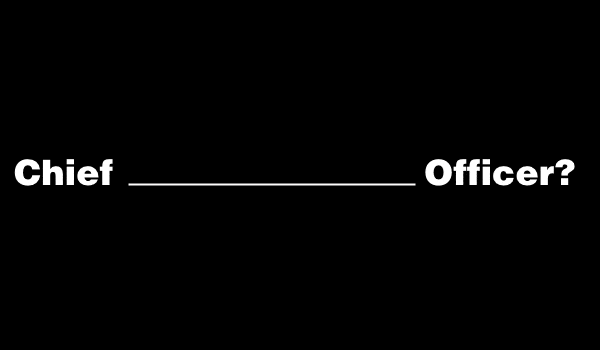
Digital disruption, increasing consumer demands, and an emphasis on workplace culture have all culminated in dramatic changes in organizations. No matter the industry or business, though, one of the more overlooked areas is the C-suite itself. Nowadays, if your C-suite just includes the big four—CEO, CFO, COO, and CIO—then you may be setting yourself up for failure.
New roles are emerging faster than ever before: chief customer officer, chief digital officer, chief experience officer, and chief data/analytics officer are just a few of the new titles consumers and companies can expect.
But these new roles aren’t just intended to increase the size of the C-suite. Instead, these leaders have become crucial in helping to address key areas for an organization’s success.
Keep Up with Growth
Ogletree, Deakins, Nash, Smoak & Stewart, P.C., a labor and employment law firm, has grown tremendously in recent years. As a result, Patrick DiDomenico is ensuring the firm’s innovative resources are accessible to all in his role as chief knowledge officer.
“Clients don’t hire large law firms like ours because of one person,” says DiDomenico, whose firm represents diverse clientele, from small businesses to Fortune 50 companies. “Our clients want the collective knowledge and broad experience of many lawyers.”
While knowledge management is still a relatively young discipline, having a dedicated knowledge management leader at any organization, law firm or otherwise, is rare—but on the rise. The knowledge management department at Ogletree Deakins has grown to thirty members in four main groups: research and knowledge management counsel; the internally focused knowledge management firm solutions; the externally focused knowledge management client solutions; and the process-focused group known as legal project management, which helps lawyers plan, scope, budget, and efficiently execute matters.
“Knowledge management is about being pragmatic,” DiDomenico says. “It improves both the business and practice of law, and an organization matures exponentially when it focuses on knowledge management and gives a chief knowledge officer a seat at the table.”
Emphasis on Culture
Having a strong company culture isn’t a trend. In fact, it’s an essential factor for executing a sound business strategy that achieves buy-in from all employees. That’s especially true for a company that has grown tremendously in recent years, as CenterState Bank now has 107 branch locations with roughly $12 billion in assets. The company strongly emphasizes integrating strong values into each of the communities it serves, as well as the lives of its employees.
“To me, culture is about nurturing and fostering those values that the bank was established upon,” says Debbie Harsh, SVP, chief culture officer for CenterState Bank. “It’s about caring about our employees, their families, the communities that we serve, and making them feel appreciated for what they do.”
As the chief culture officer, Harsh and her team have implemented a variety of initiatives to help CenterState adhere to its goals of being local market-driven, incorporating world-class service, forming real relationships with customers, and focusing on faith and family.
“We’ve made around two acquisitions per year, which can be quite labor intensive,” she says. “That’s in addition to running the day-to-day operations. So, we want the people working in the backroom support areas, as well as the front line, and their families, to know they are appreciated for their commitment and the time constraints placed on them.”
Leaders During Change
Nearly two years ago, Yum! Brands proved why new roles are essential in times of change, especially when the company spun off its successful China business into a separate public company, thus returning $6.2 billion to shareholders.
During that time, Yum! also launched a multiyear transformation plan to become what chief transformation and people officer Tracy Skeans calls a more focused, more franchised, and more efficient company that has improved profitability, reduced volatility, and accelerated growth across its franchises.
Now, Skeans is playing a crucial role in leading the company’s business transformation and people strategies to build powerful brands and fuel business results.
“Undergoing an enterprise-wide transformation is never easy,” Skeans says. “In the beginning, we had to figure out how to work differently across functions and reinvest in certain things while making reductions in some areas. We’ve realigned our global organization around a renewed focus and an evolved vision.”
Yum! Brands’ transformation is also shifting to focus more on growing the company’s culture and talent to strengthen the customer experience and overall performance. “We believe that the more we can focus our organization on the things that will ultimately drive growth for our brands, the more it will pay off for our employees, franchisees, and shareholders,” she says.
And as every company in every industry continues to evolve, these new titles in the C-suite may simply scratch the surface. After all, the success of a business can typically be traced back to its leadership.















